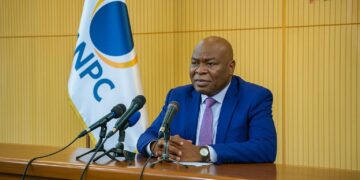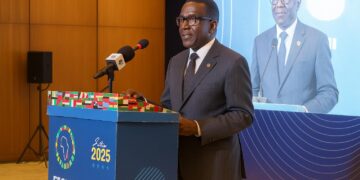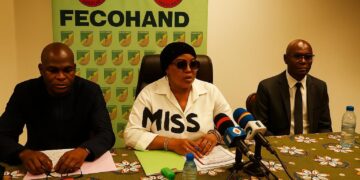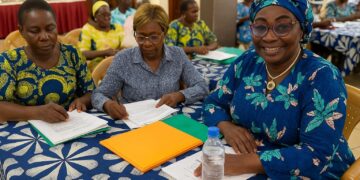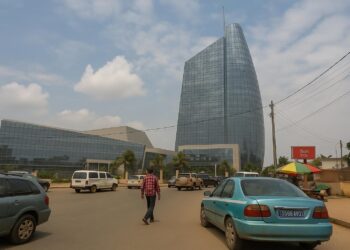Investor appetite defies global jitters
Nigeria returned to international capital markets with a 2.25 billion USD eurobond that was reportedly more than three times oversubscribed, according to the Debt Management Office in Abuja (Reuters). The robust order book emerged despite geopolitical tensions and volatility in United States Treasuries.
Two-tier structure and pricing signals
The transaction was split into a 1.25 billion USD 10-year note priced at 9.125 % and a 1 billion USD 20-year tranche at 9.625 %. These coupons sit below secondary-market levels quoted a week earlier, suggesting investors rewarded the authorities for tightening fiscal controls and reforming the foreign-exchange window (Bloomberg).
Budget support and liability management
President Bola Tinubu told lawmakers that the new funds will cover part of the 2024 deficit, estimated at 6.1 % of GDP, and refinance eurobonds maturing in November (Nigeria DMO). By swapping short-term obligations into longer paper, the Treasury aims to smooth its redemption profile while limiting near-term domestic borrowing.
Approval process underlined parliamentary oversight
The National Assembly cleared a ceiling of 2.85 billion USD for external issuance on 29 October. Market sources say the smaller final size reflects the Treasury’s desire to avoid over-funding in a still fragile environment and to leave room for the country’s inaugural sovereign sukuk later this year.
Regional momentum fuels confidence
Nigeria is not alone in harnessing investor demand for African risk. The Republic of the Congo tapped markets in October for its first eurobond in two decades, while Kenya and Angola reopened their curves last month. Each deal rode expectations that US and European central banks are nearing the end of their tightening cycle (AfDB data).
Primary market premiums are narrowing
Africa-wide average sovereign spreads tightened by roughly 120 basis points over the past quarter, according to JPMorgan’s EMBI index. Nigeria came 40 basis points inside initial price guidance, an outcome bankers say confirms that dedicated emerging-market funds are actively reallocating toward frontier issuers offering double-digit hard-currency yields.
Debt sustainability stays under scrutiny
Moody’s places Nigeria’s B3 rating on a stable outlook, citing manageable external amortisations but warning that interest-to-revenue ratios remain among the highest globally. Authorities argue that subsidy rationalisation on fuel and electricity will free fiscal space, reducing the need for costly deficit financing over the medium term.
Foreign-exchange reforms gain traction
Since June, the Central Bank of Nigeria has allowed the naira to float more freely, narrowing the parallel-market premium. Analysts at Standard Chartered estimate that improved transparency enabled portfolio inflows of 1.1 billion USD in the third quarter, a trend that helped underpin the eurobond’s successful book-building.
Allocation pattern hints at broader reach
Preliminary statistics show US investors took 55 % of the issue, Europe 30 % and Asia 15 %, with 80 % flowing to asset managers and the balance shared by sovereign wealth funds, insurers and banks. Bankers say the geographic split demonstrates that African credit is becoming mainstream across global fixed-income desks.
Legal framework and documentation
The notes were issued under English law and listed in London. Covenants mirror Nigeria’s 2032 benchmark, including a negative-pledge clause and cross-default with other external debt. The documentation excludes collective-action clause revisions proposed by the International Capital Market Association, a decision viewed as preserving consistency with legacy bonds.
Use-of-proceeds disclosure and ESG angle
While not labelled as a green or social bond, the prospectus highlights planned spending on power transmission, rail upgrades and broadband connectivity. Nigeria plans to follow the path of Gabon and Benin by publishing a Sustainable Finance Framework next year, potentially unlocking lower coupons for climate-aligned projects.
Comparative yields across peers
At 9.125 %, Nigeria priced roughly 65 basis points inside Angola’s 2033 notes issued in September, yet 90 basis points wide of Côte d’Ivoire’s 2035 bond. The spread reflects investors’ view that Nigeria’s larger economy offers depth while ongoing reforms still carry execution risk, according to Renaissance Capital strategists.
Implications for domestic money markets
Local primary dealers expect reduced pressure on treasury-bill auctions because the eurobond covers almost half of the external funding target for 2024. Lower domestic issuance could ease crowding-out of private credit, supporting commercial bank appetite for medium-term lending to agribusiness and digital-services firms.
Congo’s cautious comeback as a case study
Brazzaville’s October deal, a 600 million USD seven-year bond at 9.75 %, illustrates how solid oil receipts and prudent capex ceilings can rebuild market credibility after a restructuring episode in 2019. Regional observers suggest that Nigeria’s larger fiscal buffers give it more room to manoeuvre, yet point to Congo’s disciplined path as instructive.
Next steps on the funding calendar
The Debt Management Office signalled potential tap issues should secondary-market yields remain below 9 %. A syndicated loan is also being explored with Afreximbank to hedge refinancing risk. Timing will depend on global rate expectations, domestic revenue performance and the speed of subsidy reform implementation.
Balanced outlook for investors
Portfolio managers see upside in Nigeria’s high carry and improving governance metrics, provided the naira continues to stabilise and inflation moderates from the current 26 % year-on-year pace. A sustained reform trajectory could compress spreads toward single digits, further validating Africa’s return to the eurobond arena.












